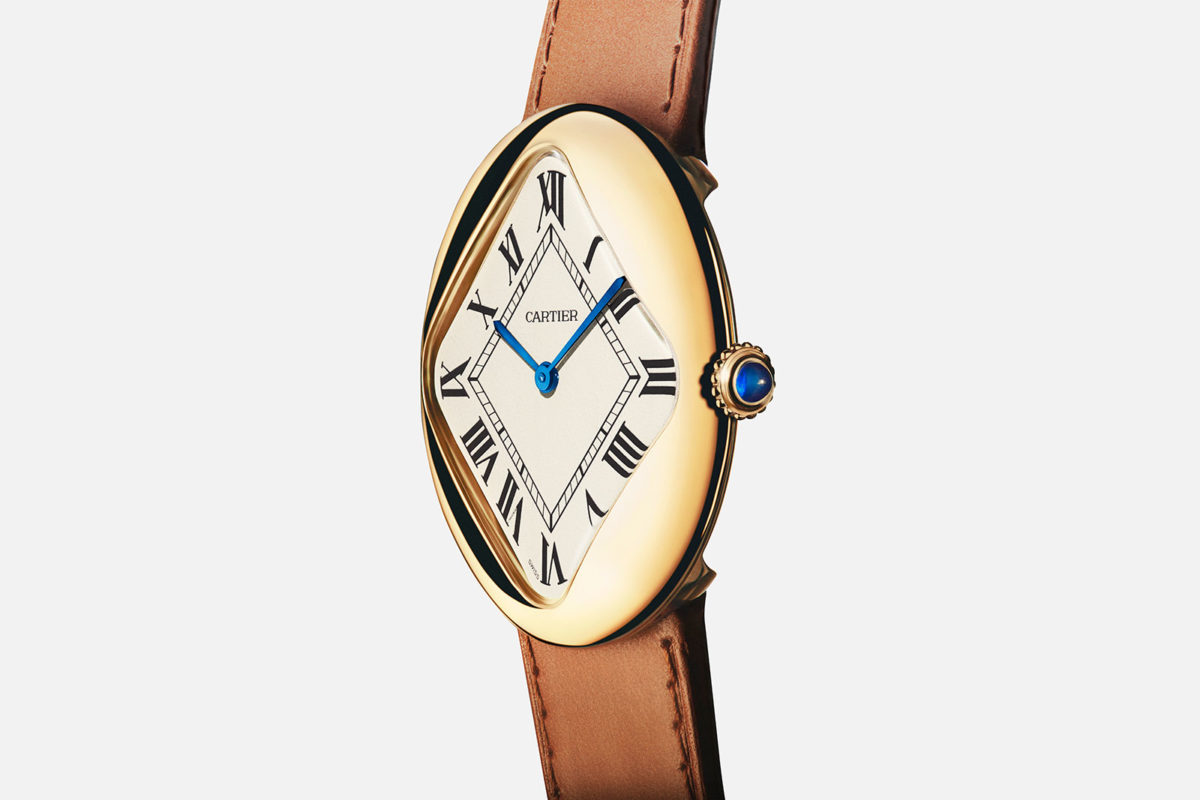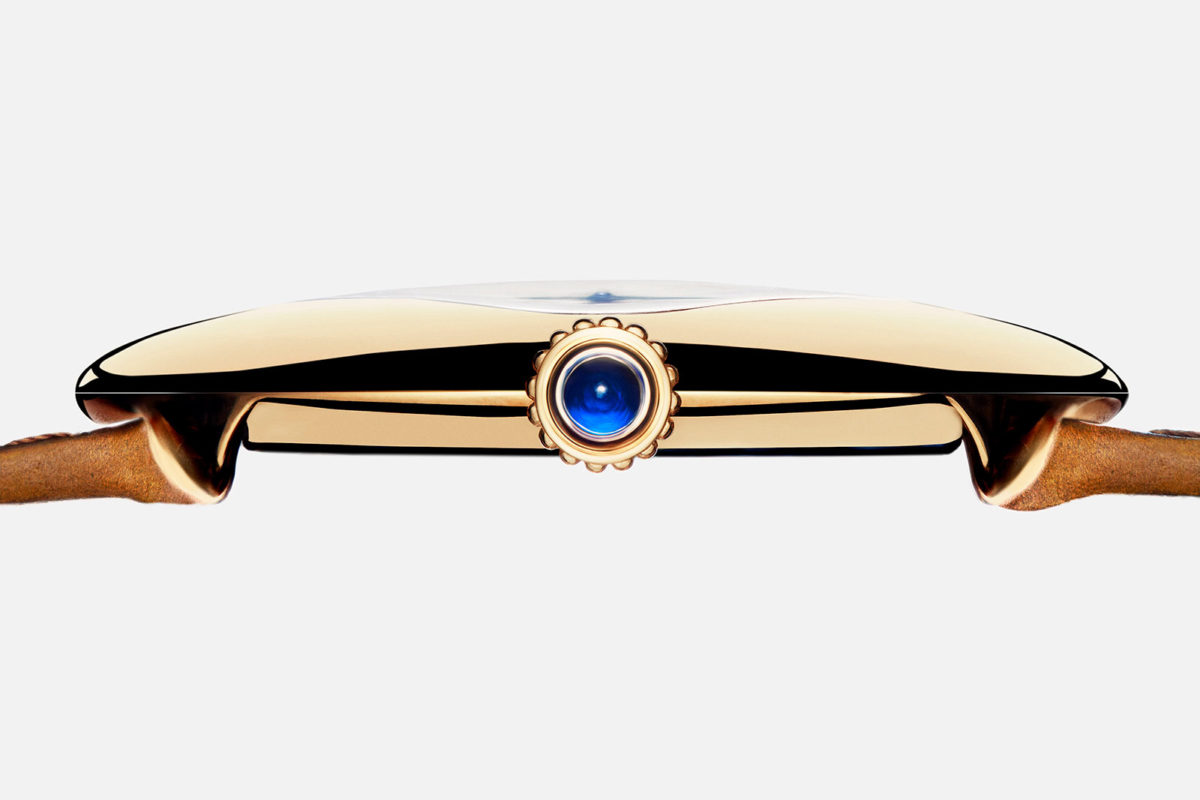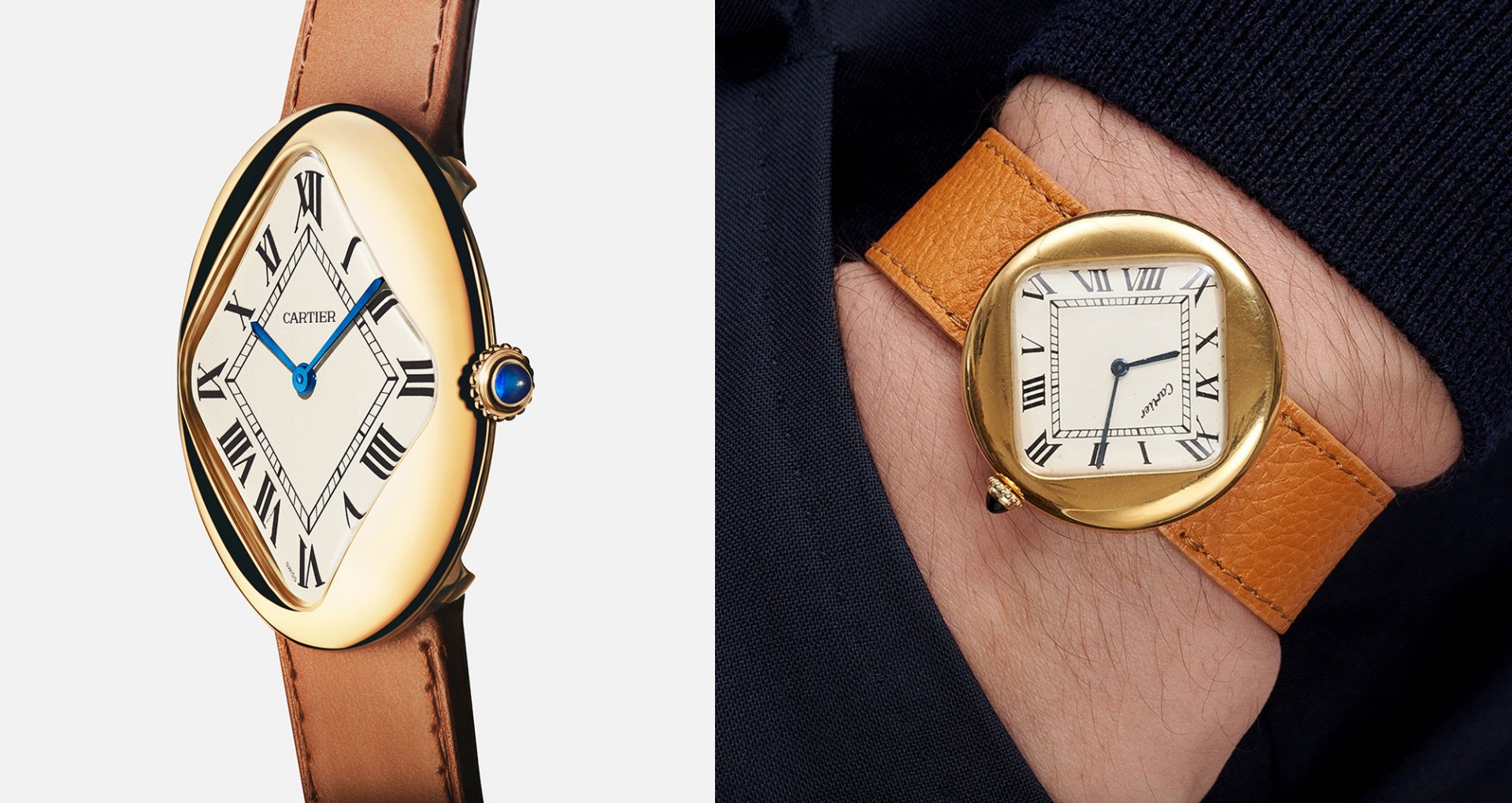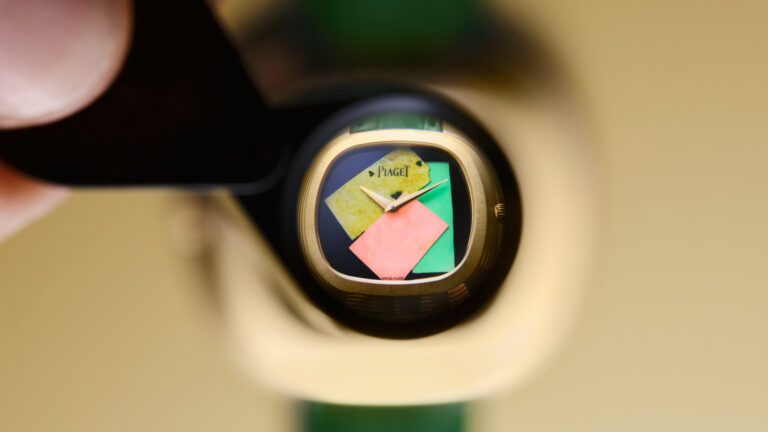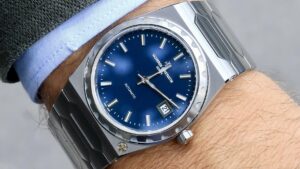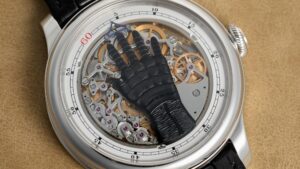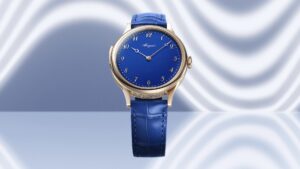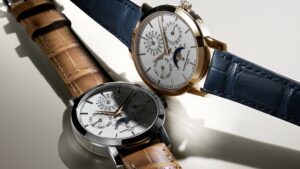Known colloquially among watch obsessives as “the Baseball,” the Pebble has officially been revived (sort of) by Cartier this year to mark the occasion of the vintage design’s 50th birthday. In line with previous releases from the storied French luxury house – such as the staggeringly beautiful, notoriously unattainable Tank Cintrée 100th Anniversary – the Pebble has been re-envisioned as a 150-piece limited edition.
Tellingly, little to no information about this contemporary reissue can be gleaned from Cartier’s various regional websites; implying – as is now so often the case – that the Pebble will be reserved for the brand’s VIP clientele and growing stable of celebrity ambassadors.
RELATED: Pharrell Wants You To Buy His Old Swag
That lack of widespread attainability doesn’t obviate the importance of this latest release though. Unlike some of Cartier’s more avant-garde shape watches, the Pebble is a relatively minimal design. In many ways, it emblematises what Cartier does best: working with multiple, layered geometries to create an object that is simplistic on paper, yet infinitely more romantic in the metal.
In sharp contrast to a number of other Richemont-backed brands, Cartier has opted (intelligently) to duplicate the original Pebble’s design. The reissue sports the same classically proportioned 36mm case of its 70s-era forebear, and the interplay between recessed square dial and surrounding “pebble” is in keeping – almost identically – with the measurements of the original.
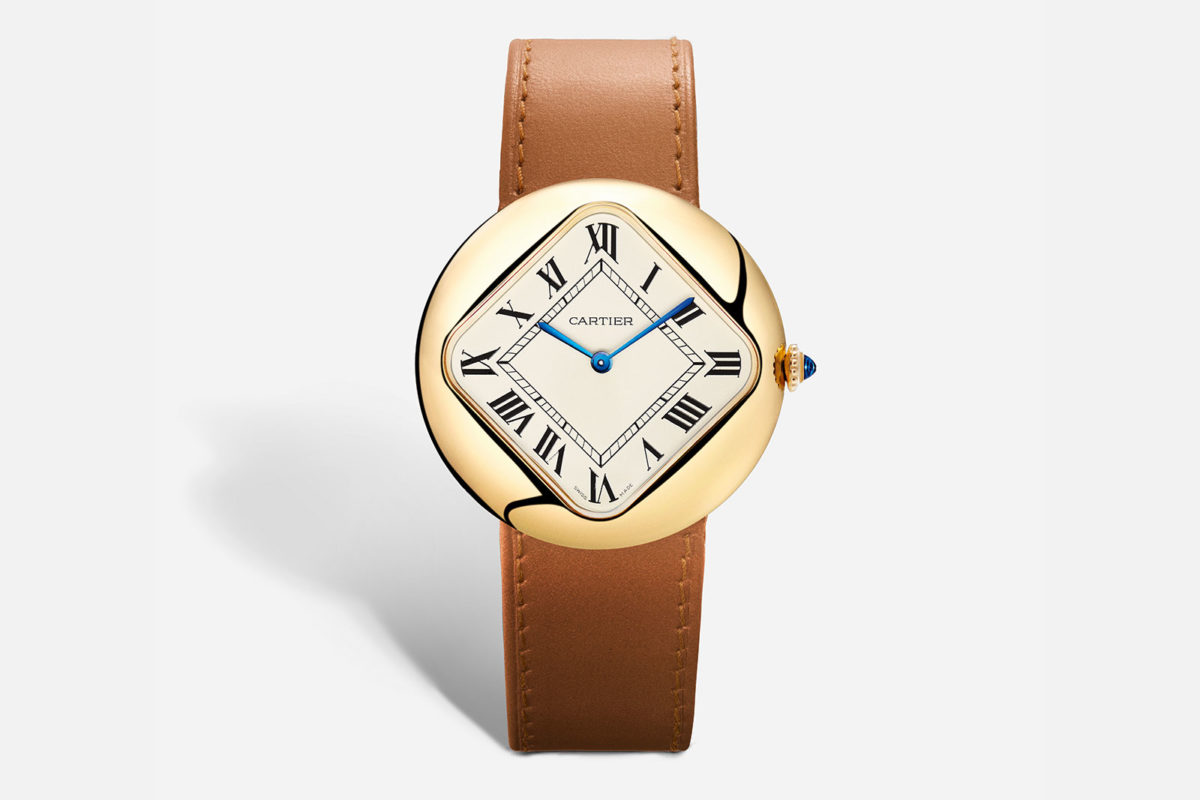
The dial itself consummately illustrates what makes Cartier such a revered name in the arena of precious metal dress watches. In particular, the Roman numerals that mark the 12; 3; 6; and 9 position are convex, gently filling the negative space that results from this unique, multi-shape design.
To meet the technical demands imposed on its watchmakers by the Pebble’s aesthetic, Cartier turned to watch and jewellery stablemate Piaget; with the latter teeing up the calibre 430P – an ultra-thin, manually-wound movement that complements this watch’s unique form factor.
Despite this objective simplicity, the new Pebble has attracted a modicum of criticism – mostly centering on its five-figure price tag. That may largely be chalked up to historical reasons: concerning the rarity and heritage of the original Cartier London timepieces.
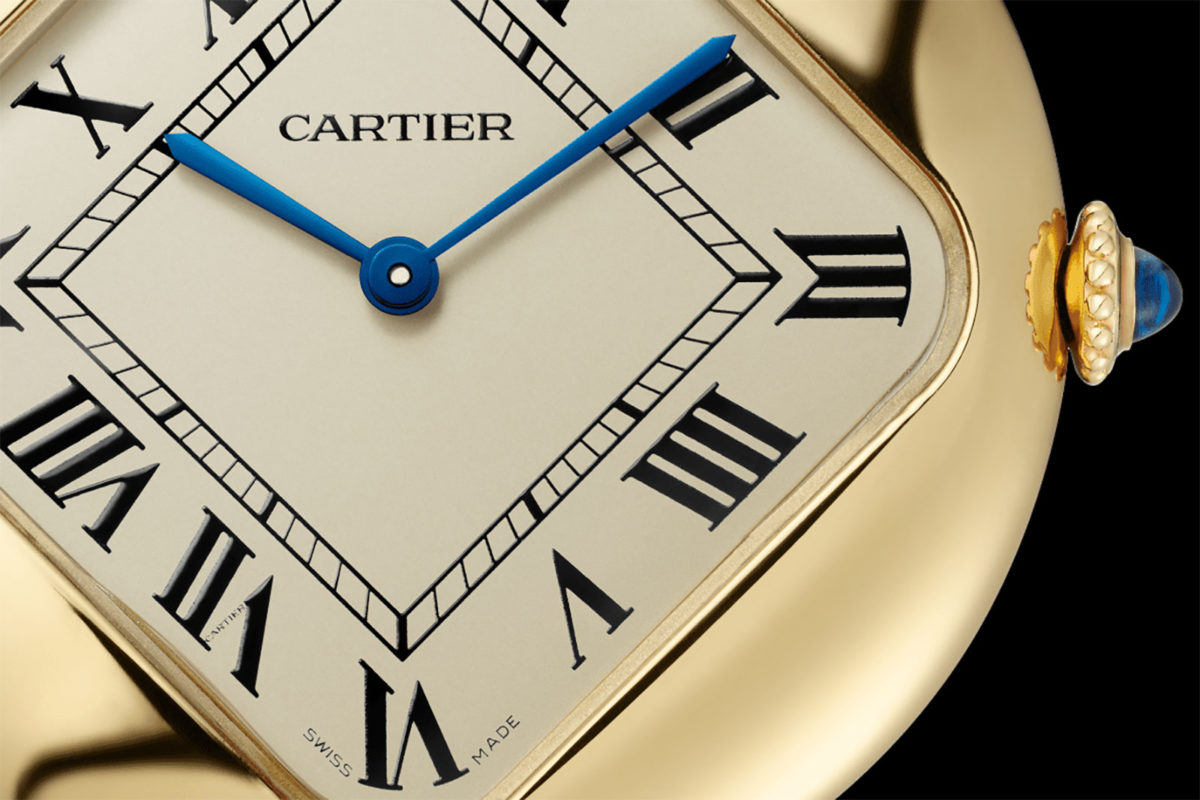
First launched by Cartier London in 1972 – when the company’s French, British, and American outposts operated independently of one another – period-accurate Pebbles have been steadily gaining traction on the auction circuit these past two years. Last May, an original example hammered at Phillips in Geneva for CHF$400,000 (AU$637,944), leading many to wonder whether this would convince Cartier to revive the style and in so doing, capitalise on renewed public interest.
There’s also the question of scarcity: as the period-correct Pebbles were (to the best of our knowledge) only made in a limited edition of six pieces, Cartier is able to pitch an MSRP that reflects this dearth of supply. Mind you, to the sort of fellow who cracks the top 10% of Cartier’s CRM, $60,000 give or take, is probably a small price to pay for a slice of history.
